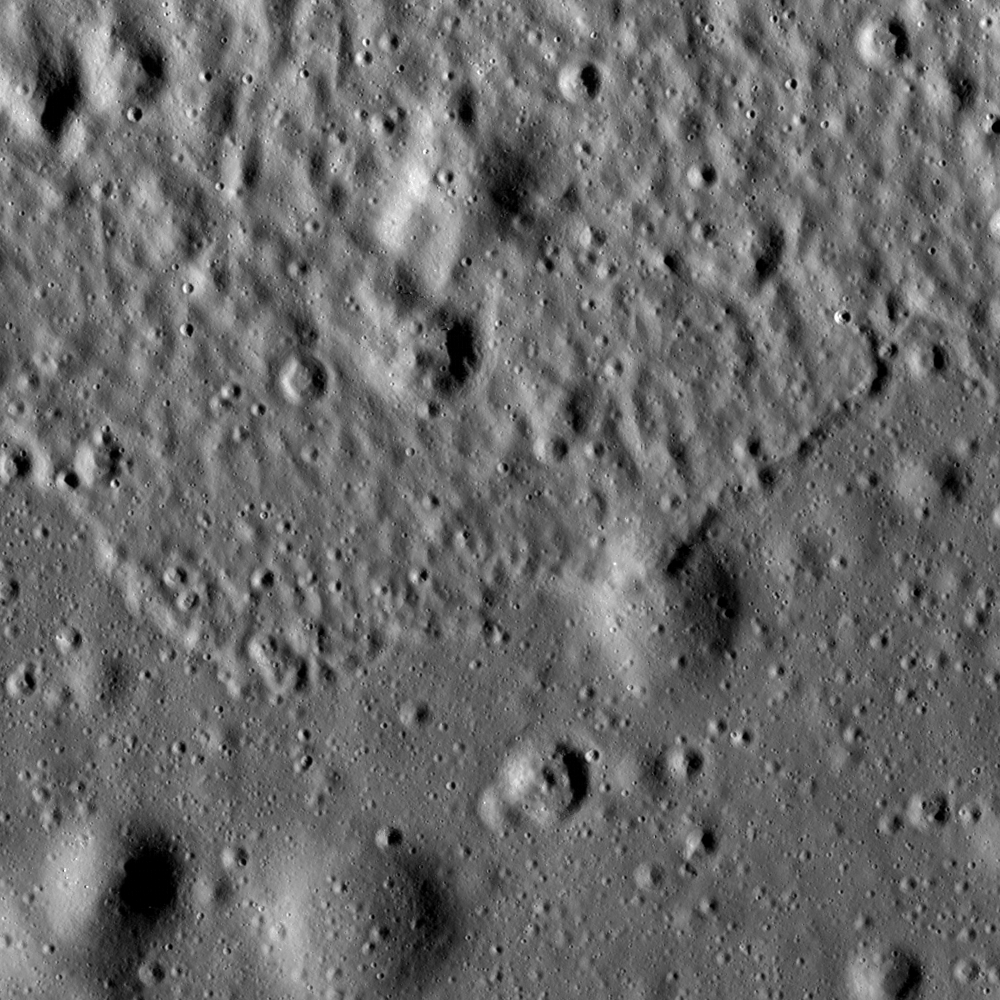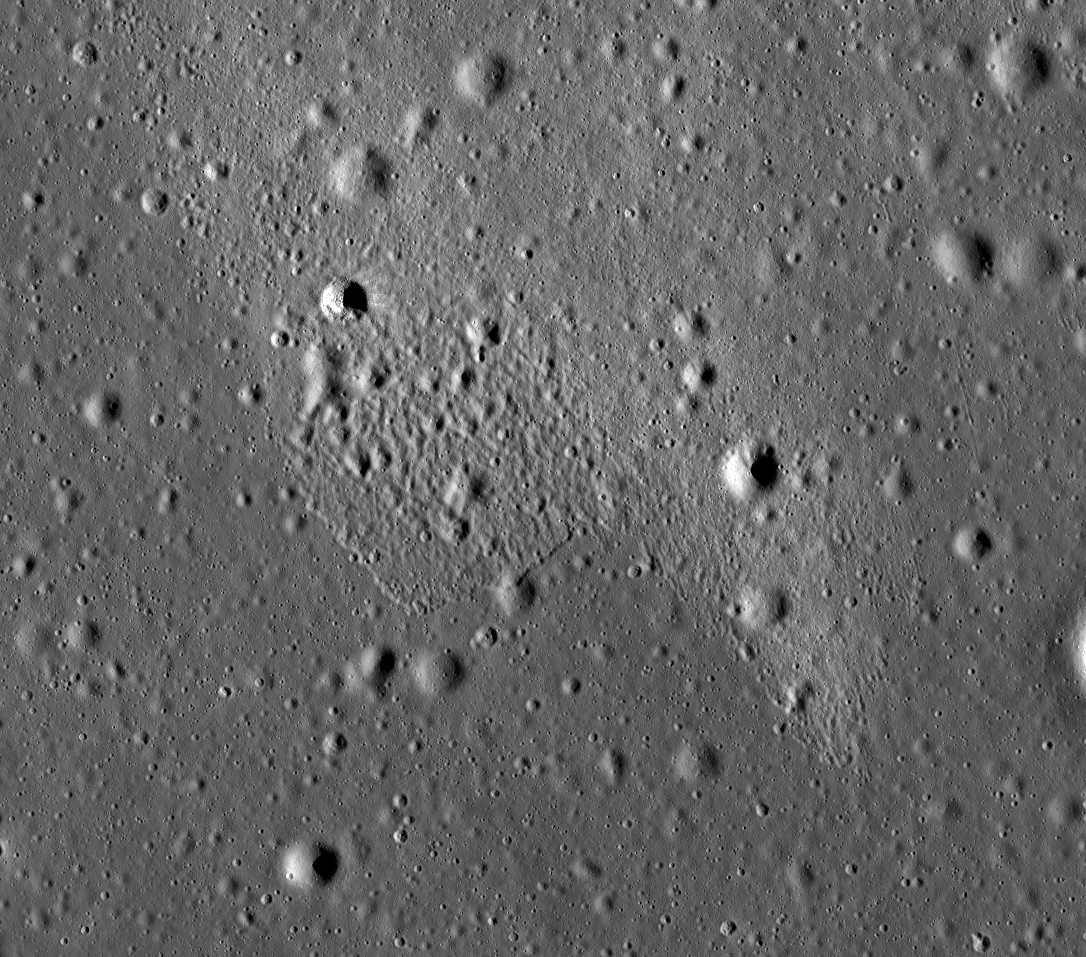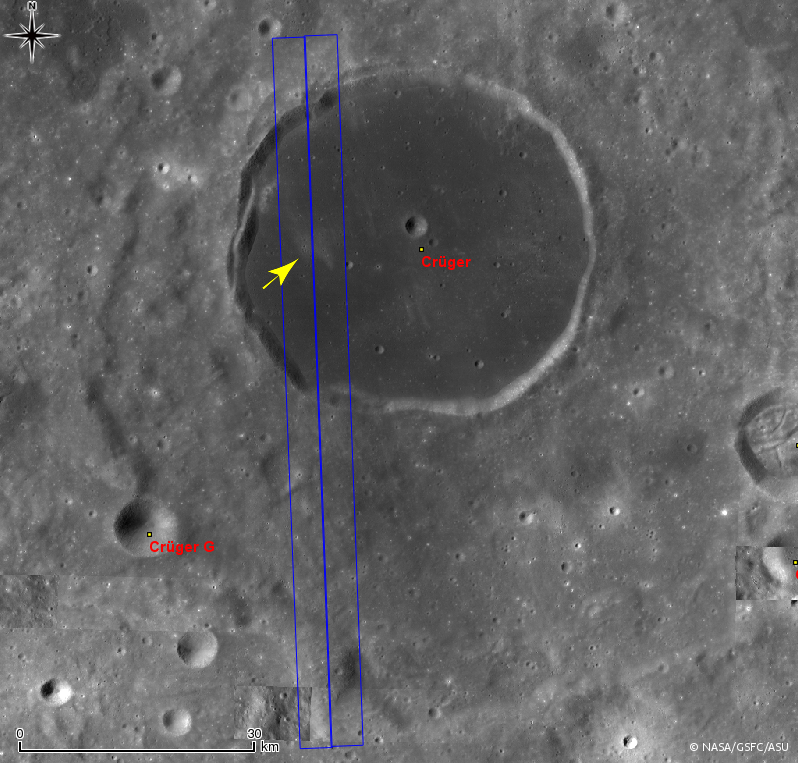
Crüger is a 45 km diameter crater located between Oceanus Procellarum and Orientale basin. The floor is completely covered in basaltic lava deposits, and is very flat. The western portion of the floor shows slightly high reflectance spots with clustered craters and disturbed surfaces, likely a field secondary craters. A unique feature of this grouping is the sharp topographic relief delimiting its southern boundary. The upper half of the opening image, the relatively disturbed and hummocky part, corresponds to the cluster area. Note that the sunlight is from the right side, and the cluster area is topographically lower than the southern relatively smooth area along the delimiting boundary.
As seen in the NAC context view, the southern end of this secondary cluster is surrounded by this sharp boundary. Likely a densely packed group of ejecta landed with a low angle, resulting in this unique deposition pattern.
Explore this unique secondary crater cluster patterns in full NAC frame yourself!
Related posts:
Cluster of farside secondary craters, Stream of Secondary Craters, Chain of secondary craters in Mare Orientale, Regolith on Basalt, Clusters, Tres Amicis, Crater Chain near Rima T Mayer
Published by Hiroyuki Sato on 14 May 2013

